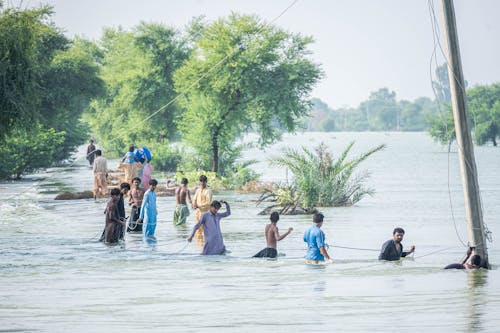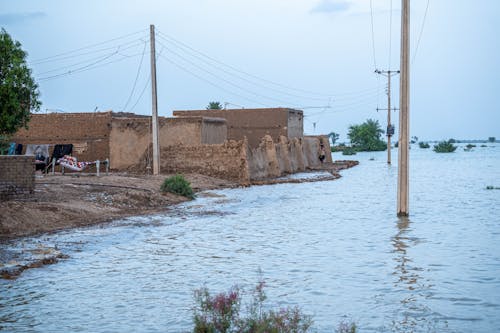Introduction: Why Water Crisis in Pakistan is Taking Place
Pakistan is facing a significant water crisis, a situation that affects millions of people across the country. Understanding why the water crisis in Pakistan is taking place involves delving into various factors, including population growth, climate change, mismanagement of resources, and geopolitical issues. This article explores these aspects in detail, shedding light on the underlying causes of this pressing problem.
The Geographic and Climatic Context
Climate Change and Its Impact on Water Resources

One of the main reasons why the water crisis in Pakistan is taking place is the changing climate. The country is experiencing extreme weather patterns, including prolonged droughts and intense rainfall. This variability leads to unpredictable water availability and exacerbates the existing shortages.
Topography and Water Distribution
Pakistan’s geography plays a crucial role in its water management challenges. The Indus River System is the primary source of water; however, uneven distribution across the country creates localized shortages. Understanding Why Water Crisis in Pakistan is Taking Place requires an analysis of the hydrological patterns and how they impact various regions.
Population Growth: A Key Factor

Rapid Urbanization
The population of Pakistan has surged in recent decades, leading to increased demand for water. Urbanization compounds this issue, as cities like Karachi and Lahore experience massive influxes of people. This rapid growth creates pressure on existing water supplies, making it imperative to address why the water crisis in Pakistan is taking place.
Strain on Agriculture
Agriculture, which employs a significant portion of the population, relies heavily on water resources. The increasing demand for agricultural products, coupled with traditional farming practices, contributes to the over-extraction of water from rivers and aquifers. This unsustainable practice is a crucial factor in Why Water Crisis in Pakistan is Taking Place
Mismanagement of Water Resources

Inefficient Water Use
A major aspect of why the water crisis in Pakistan is taking place is the inefficient use of available water. Many farmers rely on outdated irrigation techniques that lead to significant water loss. Implementing modern irrigation practices is essential for improving water efficiency and mitigating the crisis.
Infrastructure Issues
The water distribution infrastructure in Pakistan is inadequate and often poorly maintained. Leaks, outdated pipes, and inefficient storage systems result in a substantial loss of water before it reaches consumers. This mismanagement directly contributes to the ongoing crisis and illustrates why the water crisis in Pakistan is taking place.
Geopolitical Factors

Water Sharing Agreements
The Indus Waters Treaty, signed in 1960 between India and Pakistan, outlines water-sharing agreements that are increasingly strained. Disputes over water rights and access have become more pronounced, affecting Pakistan’s ability to manage its water resources effectively. Understanding Why Water Crisis in Pakistan is Taking Place includes recognizing the geopolitical complexities surrounding water distribution.
Regional Conflicts
Regional conflicts further complicate the water situation in Pakistan. Issues related to terrorism and political instability divert attention and resources away from effective water management solutions. This diversion impacts the country’s efforts to address Why Water Crisis in Pakistan is Taking Place
The Role of Policy and Governance

Lack of Effective Water Management Policies
Policy failures play a significant role in the ongoing crisis. The absence of coherent and comprehensive water management strategies hampers efforts to tackle the crisis effectively. This lack of planning contributes to why the water crisis in Pakistan is taking place.
Corruption and Bureaucratic Inefficiency
Corruption and inefficiency within governmental institutions hinder effective water management. Resources that could be allocated for infrastructure improvements and sustainable practices are often misappropriated, exacerbating the crisis and highlighting why the water crisis in Pakistan is taking place.
Socioeconomic Implications

Impact on Public Health
The water crisis in Pakistan has dire consequences for public health. Insufficient access to clean water leads to waterborne diseases, disproportionately affecting vulnerable populations. Understanding why the water crisis in Pakistan is taking place involves examining the health repercussions tied to this scarcity.
Economic Consequences
The economic fallout from the water crisis is substantial. Reduced agricultural productivity and increased health care costs burden the economy. This economic strain serves as a stark reminder of why the water crisis in Pakistan is taking place and the need for urgent action.
Community Responses and Innovations

Grassroots Initiatives
Communities across Pakistan are developing innovative solutions to cope with water scarcity. Local initiatives focus on rainwater harvesting, efficient irrigation practices, and community education about water conservation. These grassroots efforts are vital in addressing why the water crisis in Pakistan is taking place.
Government and NGO Collaboration
Collaboration between governmental bodies and non-governmental organizations is crucial for developing sustainable water management strategies. Joint efforts can lead to improved infrastructure, better resource allocation, and increased public awareness about the importance of addressing why the water crisis in Pakistan is taking place.
Conclusion: The Path Forward

Sustainable Water Management Practices
To mitigate the water crisis, Pakistan must adopt sustainable water management practices. This includes investing in modern irrigation techniques, improving infrastructure, and enhancing water conservation efforts. Understanding why the water crisis in Pakistan is taking place highlights the urgent need for reform in these areas.
Policy Recommendations
Implementing effective policies is essential for addressing the crisis. This includes establishing clear regulations on water usage, improving governance in water resource management, and fostering cooperation with neighboring countries over shared water resources. Recognizing why the water crisis in Pakistan is taking place can guide policymakers in making informed decisions.
Public Awareness and Education
Raising public awareness about water conservation is critical. Educational campaigns can empower citizens to adopt sustainable practices and advocate for better water management. Addressing why the water crisis in Pakistan is taking place through education can foster a culture of responsibility towards water usage.
Final Thoughts

The water crisis in Pakistan is a multifaceted issue that requires a comprehensive understanding of its causes. By exploring why the water crisis in Pakistan is taking place, we can better appreciate the complexities involved and work towards viable solutions. The future of water security in Pakistan hinges on collective action, innovative practices, and effective governance to ensure that water remains a sustainable resource for all.




